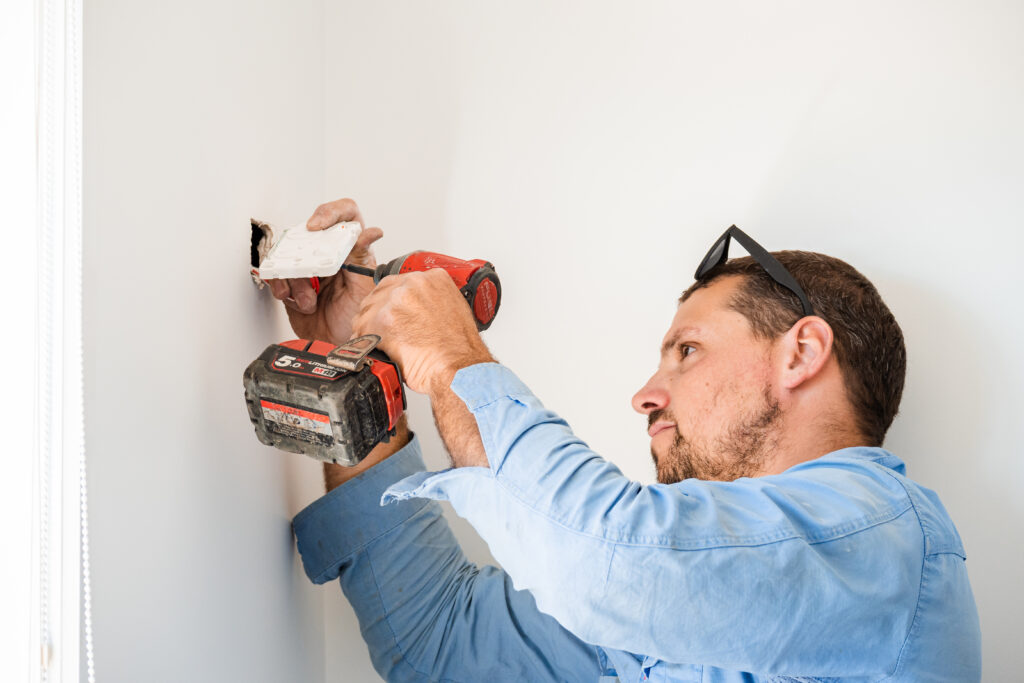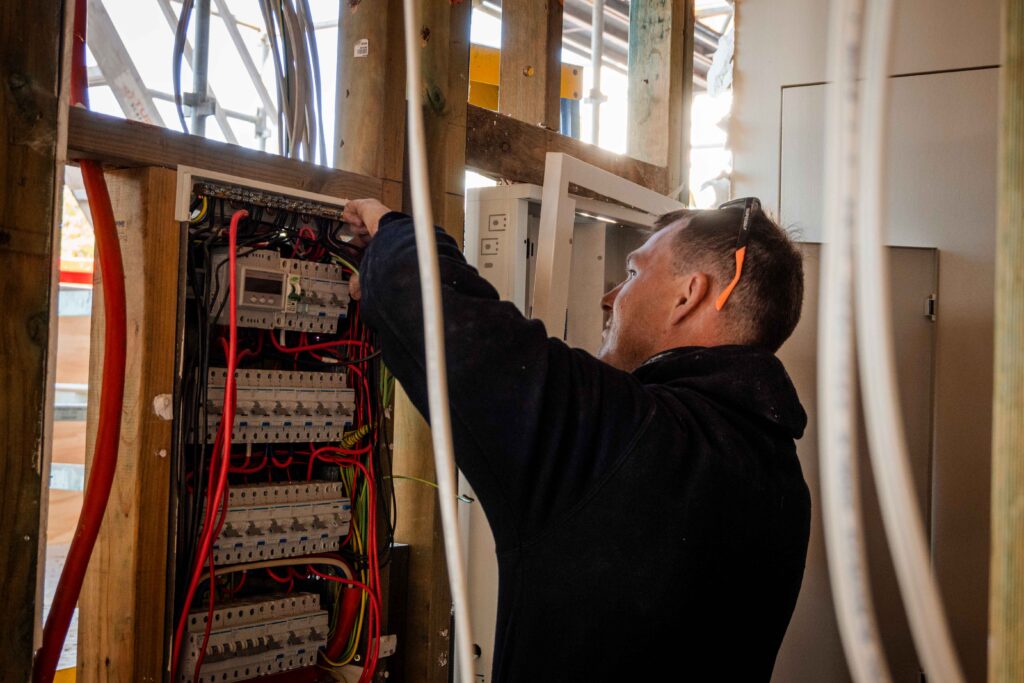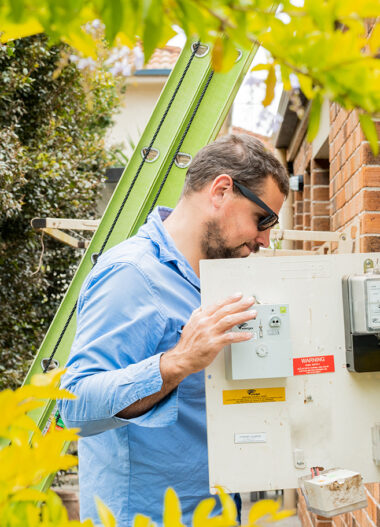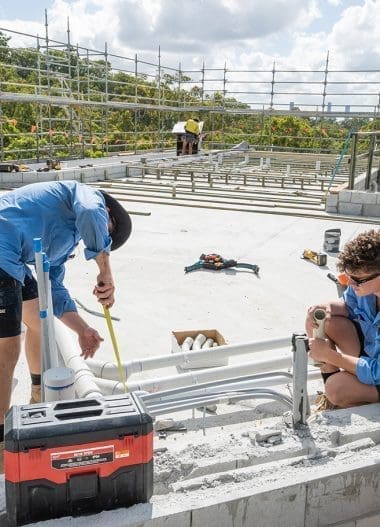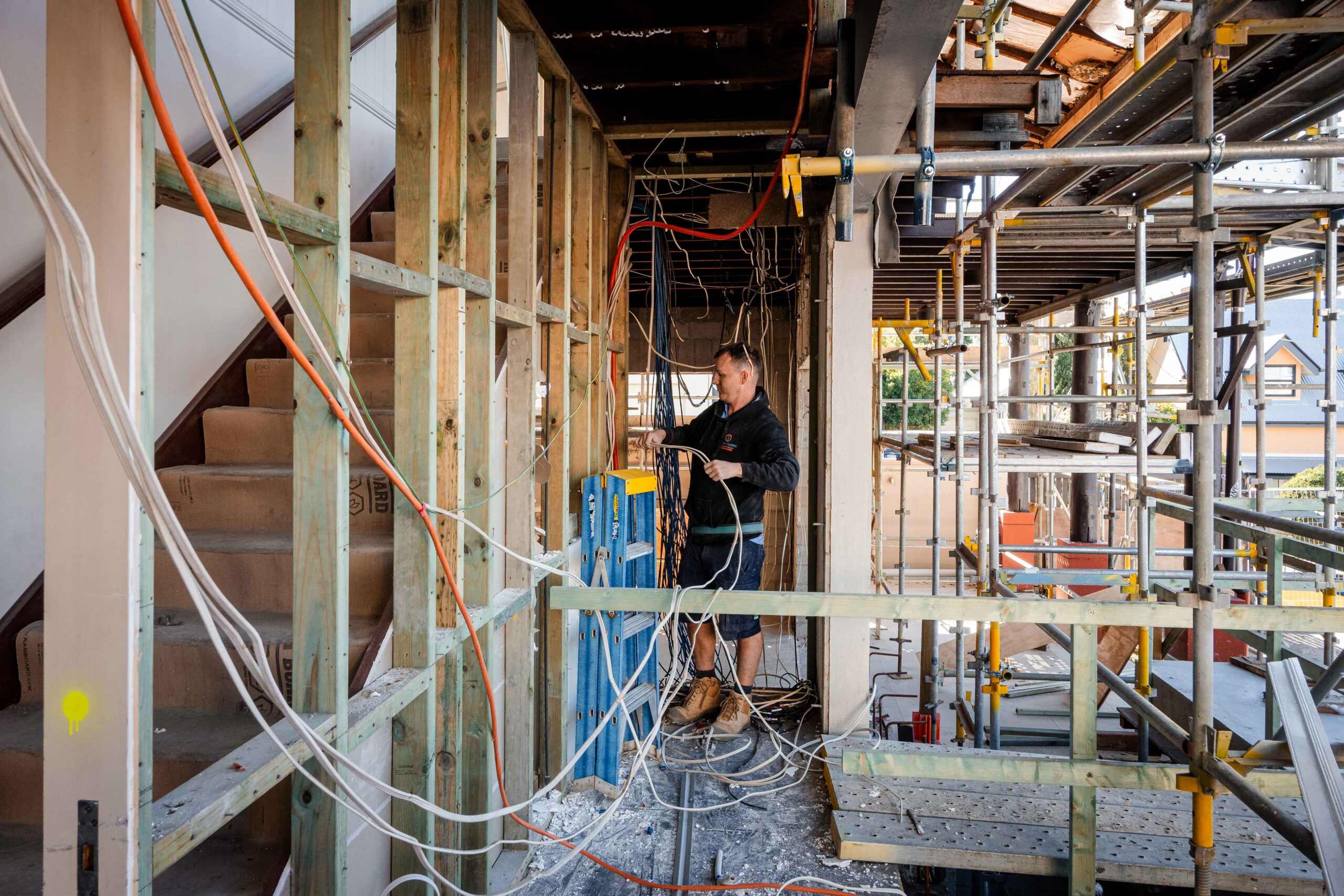
Is it time to rewire your home? New homes enjoy modern electrical wiring that can handle the plethora of appliances and devices we plug into daily. That wiring is like the nervous system of your home, keeping everything from the lights to the split system air conditioner running.
Over time, that wiring ages though, just like everything in a home. Just like we replace items like the electric oven or kettle, the air con units or the ceiling fans, at some point the wiring has to be replaced too. When it gets worn, outdated, or even damaged over the years, it can become an electrical safety hazard that is putting your home and its inhabitants at risk.
If you’re in an older home, you might start noticing some indicators that are telling you your wiring isn’t keeping up with your daily use anymore. If any of the below points apply, it could be time to get a professional residential electrician in to do an assessment of your property wiring and make sure its safe and up to code.
8 Signs It’s Time to Rewire Your Home
1. Circuit Breaker Keeps Tripping
You flick on the kettle, or the TV or even a light switch… and the circuit breaker in your switchboard trips. This is a sign you’re overloading your system and your wiring could be struggling to cope with modern power demands. Think of all the devices you have tapping into your electricity supply – large screen TVs, multiple computers, dishwashers and so on – older houses like those built in the 70s or 80s weren’t put together with that level of power usage in mind.
If your circuit breaker is constantly tripping, your wiring is shouting for help. Get the electrician Brisbane trusts in to check it out!
2. Lights Flicker or Dim
Have you noticed that there is a flicker to your lights when you turn them on in the evening? Or do they go dim when the kettle is on or the hot water system kicks in? You’re not imagining things, that’s a very real sign your wiring system could be overloaded or faulty. There might also be a loose connection somewhere – whatever the source, please give Voltora Industries a call to come and check things out.
3. Electrical Burning Smells
That faint burning smell when you walk past a powerpoint? Not good. It could be caused by melting insulation, overheating wires or even an impending electrical fire. These issues can smoulder quietly behind your walls long before a smoke alarm picks up anything. If you ever notice this kind of odour, switch off power to that area and call in a professional electrician ASAP.
4. Discoloured Outlets
Brown or black marks on your power points or light switches are another red flag to look out for. They can mean the outlet has been overheating, which might be due to faulty wiring or a loose connection inside the wall. Don’t dismiss discolouration around outlets as “just signs of ageing.” Take it as a warning sign and get it checked out.
5. Old Aluminium Wiring
If you’re in a home that was built in the 70s and hasn’t been updated since, they may have used aluminium for the wiring. It was cheap and widely available then, but it hasn’t stood the test of time very well. Over the years it becomes brittle and breaks, proving less durable and more prone to overheating. If you think you have aluminium wiring in your home, it’s time to chat about an upgrade.
6. Outdated Switchboard
Your electrical switchboard is the control centre of your home’s electrical system. If it’s outdated and not up to current standards, it’s probably a strong indication that your wiring system isn’t either. An outdated switchboard will prove dangerous in the event of a fault, and won’t be able to handle the electricity needs of most modern homes.
7. Shocking from Switches
If you hit the lights and get hit with an electric shock, no matter how small, you should be worried. Don’t brush it off, as it could be a sign of a much more significant issue with your wiring, and could escalate into something more serious.
8. Not Enough Outlets
Having multiple power outlets in your home is convenient and also important for electrical safety. Older homes generally don’t have enough outlets to cope with the devices and appliances we use every day. That’s when existing outlets end up getting overloaded with powerboards, double adapters and extensions. If you rewire your home, it allows you to add outlets where you need them and improve safety in your home.
How Much Does It Cost to Rewire Your Home?
Homes come in all shapes, sizes and conditions, so there’s no standard price that can be given when determining the cost of rewiring a home. It’ll depend on a bunch of factors, such as:
- Property size: Larger homes will cost more because there will be more materials used and more labour charges.
- Age and condition: Older homes often need more work and more comprehensive replacement of electrical equipment, such as the switchboard and power outlets. There may also be asbestos or dodgy DIY wiring lurking behind the walls. Once the job is complete, your home will be safer and probably more valuable as a result!
- Accessibility: Homes with easy roof and wall access are simpler (and cheaper) to rewire.
As a ballpark, rewiring a standard three-bedroom home can start from a few thousand and climb depending on the above factors. The best way to get an accurate idea? Let us assess your home and provide a quote tailored to your needs.
Contact Voltora Industries
Electrical faults account for around 40% of house fires in Australia. We’re not trying to scare you with that, but we do want you to take your home wiring seriously. If you have encountered any of the above signs, please give us a call on 1300 799 430 and one of our mobile electricians will be out to assess your home wiring.
Voltora Industries are Brisbane-based electricians with years of experience making homes safer, smarter, and more efficient. Don’t wait until something goes wrong – we’re here to modernise your home electricity with minimal disruption to your life. Get in touch today and let’s make sure your home is wired for safety.
Lets get started


